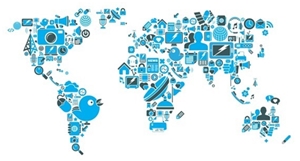Gartner predicts a 30-fold increase in Internet-connected physical devices by 2020
The future explosion in the number of intelligent devices will create a network rich with information that allows supply chains to assemble and communicate in new ways.
Gartner, Inc. forecasts that a 30-fold increase in Internet-connected physical devices by 2020 will significantly alter supply chain leader information access and cyber-risk exposure.
The Internet of Things (IoT) is forecast to reach 26 billion installed units by 2020, up from 0.9 billion just five years ago, and will impact the information available to supply chain leaders and how the supply chain operates, depending on industry.
“It’s important to put IoT maturity into perspective, because of the fast pace at which it is emerging, so supply chain strategists need to be looking at its potential now,” said Michael Burkett, managing vice president at Gartner. “Some IoT devices are more mature, such as commercial telematics now used in trucking fleets to improve logistics efficiency. Some, such as smart fabrics that use sensors within clothing and industrial fabrics to monitor human health or manufacturing processes, are just emerging.”
As these capabilities become mainstream they will allow modern supply chains to deliver more differentiated service to customers more efficiently. This will happen when many more physical assets than today are communicating their state to a networked ecosystem that then formulates an intelligent response.
Gartner believes that a double-digit increase in digital marketing investment will provide supply chain leaders with deeper market insight, as well as fulfillment challenges in industries where more granular market segments are targeted.
Digital marketing budgets are expected to continue to increase in 2014. A rapid move to digital marketing has direct implications for the supply chain, particularly for consumer product industries with rapid cycles of go-to-market and promotional activity. B2B industries adopting digital channels to reach customers will also be affected.
Marketers are segmenting audiences, understanding what they want and then building customer experiences around their commerce sites. There will be increased fragmentation of demand as digital marketing targets finer market segments in search of differentiating value propositions to end users, customers and consumers.
Using digital channels for product launches, seasonal promotions and other initiatives, marketers are conducting campaigns and communications across multiple channels, and adjusting promotions depending on results.


